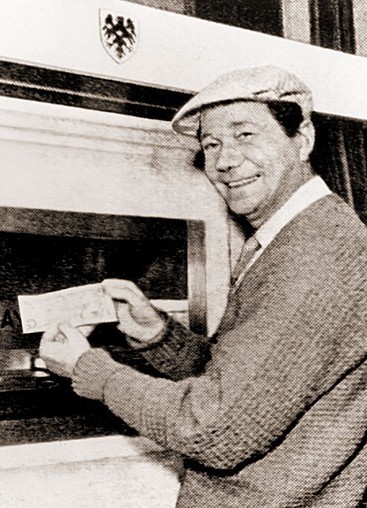-
(b.) -1925 June 23(d.)2010 May 15
Bio/Description
A Scottish inventor, he joined De La Rue Instruments in the 1960s and in 1965 came up with the concept of a self-service machine that would dispense paper currency with 24/7 availability, thus the concept of the Automated Teller Machine (ATM). The first machine was established outside an Enfield, north London, branch of Barclays Bank in June 1967, when he was Managing Director of De La Rue Instruments. According to the ATM Industry Association, there are now more than 1.7 million installed worldwide. The ATMS were at that time called DACS for De La Rue Automatic Cash System. He came up with the idea of cash dispensers in 1965 while lying in his bath after finding his bank closed. It was then his habit to withdraw money on a Saturday, but on this particular weekend he had arrived one minute late and found the bank doors locked against him. Later that year, he bumped into the Chief General Manager of Barclays Bank who was about to have lunch. Over a pink gin, he asked him for 90 seconds to pitch his idea for a cash machine. He is quoted as saying, "I told him I had an idea that if you put your standard Barclays cheque through a slot in the side of the bank, it will deliver standard amounts of money around the clock. He said, 'Come and see me on Monday morning'." Barclays commissioned him to build six cash dispensers, the first of which was installed at a branch in the north London suburb of Enfield on June 27 1967. The actor Reg Varney, star of the ITV sitcom On the Buses, was on hand to be the first to withdraw cash. There is still some controversy over the invention. While his machine was the first to be installed; James Goodfellow developed an alternative ATM design (later in 1965), using PIN technology (which he invented), more resembling modern ATMs. The original dispenser actually predated the introduction of the plastic card with its magnetic strip: the machines used special cheques impregnated with a radioactive compound of carbon-14, which was detected and matched against the personal identification number (PIN) entered on a keypad. The short-range beta emission from carbon-14 could be easily detected, and he determined that the radiation hazard was acceptable saying, "you would have to eat 136,000 such cheques for it to have any effect on you". He conceived the idea of a personal identification number or PIN with a proposed PIN length of 6 digits. This was refined by his wife, Caroline, who changed his six digit number to four as it was easier to remember. Born at Shillong, then in the Indian province of Assam (now in Meghalaya), to British parents, his Scottish father, Wilfred Shepherd-Barron, was chief engineer of the Chittagong Port Commissioners North Bengal (later Pakistan and now Bangladesh) which was then part of the British Empire then later Chief Engineer of the Port of London Authority before becoming President of the Institution of Civil Engineers, while his mother Dorothy, was an Olympic tennis player and Wimbledon ladies doubles champion. He was educated at Stowe School, the University of Edinburgh and Trinity College, Cambridge. During World War II, he was commissioned into the Airborne Forces, serving with the 159th Parachute Light Regiment. He received the Order of the British Empire in the 2005 New Year's Honours list for services to banking as "inventor of the automatic cash dispenser". He told the BBC that he was inspired by chocolate vending machines. He died after a brief illness at the age of 84 in Raigmore Hospital, Inverness, Scotland.
-
Date of Birth:
1925 June 23 -
Date of Death:
2010 May 15 -
Noted For:
Pioneer in the development of the cash machine, sometimes referred to as the Automated Teller Machine or ATM -
Category of Achievement:
-
More Info:


